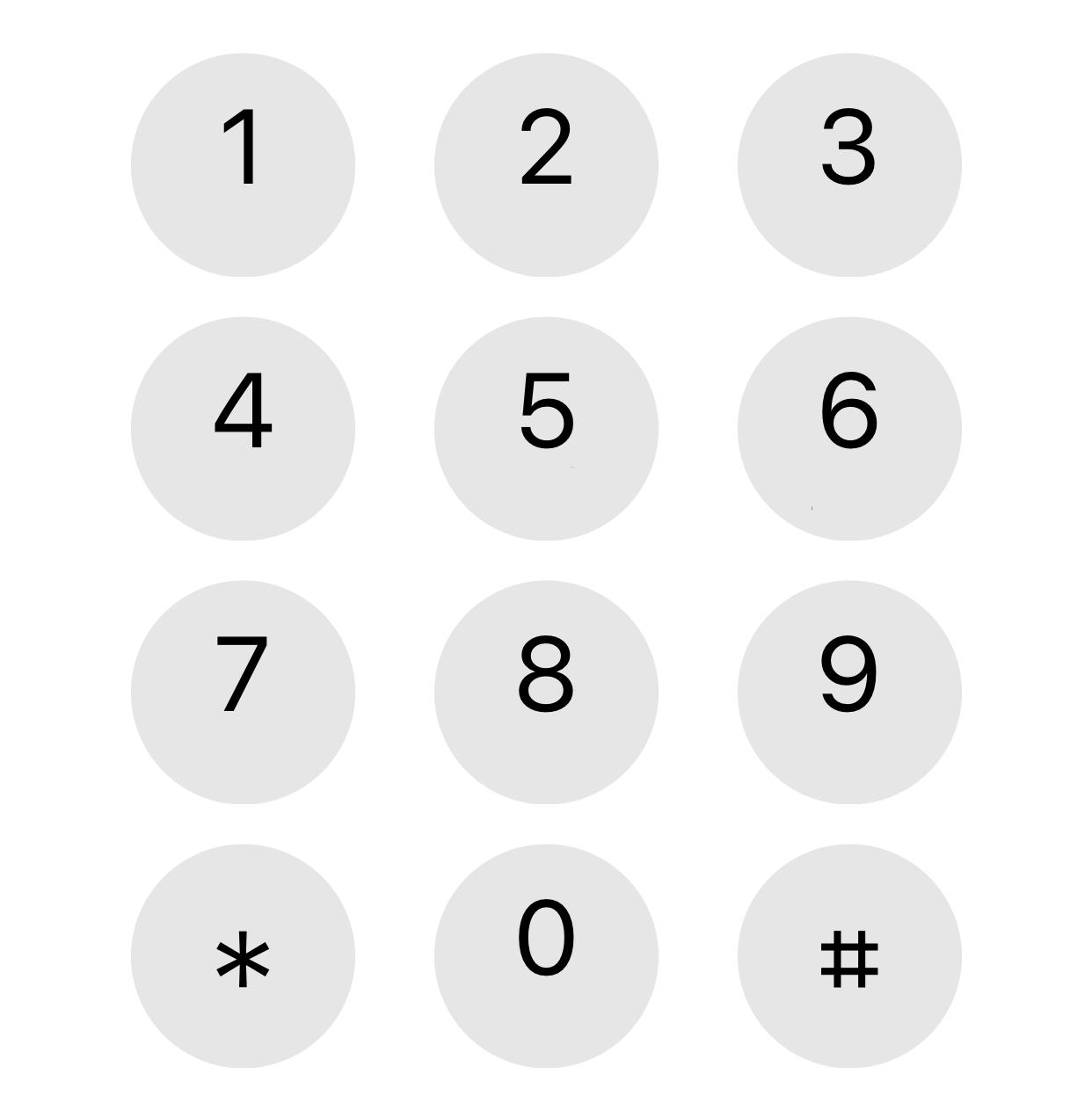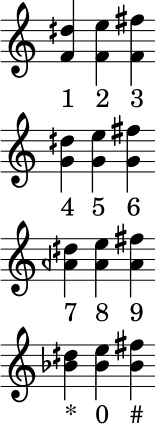The sounds produced by a telephone keypad are a combination of two tones: one for the column and one for the row. This system is known as DTMF (dual tone multiple frequency).

I’ve long wondered what these tones would be in musical terms and I finally went to the effort to figure it out when I ran across DTMF in [1].
The three column frequencies are 1209, 1336, and 1477 Hz. These do not correspond exactly to standard musical pitches. The first frequency, 1209 Hz, is exactly between a D and a D#, two octaves above middle C. The second frequency, 1336 Hz, is 23 cents [2] higher than an E. The third frequency, 1477 Hz, lands on an F#.
In approximate musical notation, these pitches are two octaves above the ones written below.

Notice that the symbol in front of the D is a half sharp, one half of the symbol in front of the F.
Similarly, the four row frequencies, starting from the top, are 697, 770, 852, and 941 Hz. In musical terms, these notes are F, G (31 cents flat), A (54 cents flat), and B flat (16 cents sharp).

The backward flat symbol in front of the A is a half flat. As with the column frequencies, the row frequencies are two octaves higher than written.
These tones are deliberately not in traditional harmony because harmonic notes (in the musical sense) are harmonically related (in the Fourier analysis sense). The phone company wants tones that are easy to pull apart analytically.
Finally, here are the chords that correspond to each button on the phone keypad.

Update: Dial tone and busy signal
Related posts
[1] Electric Circuits by Nilsson and Riedel, 10th edition, page 548.
[2] A cent is 1/100 of a semitone.

31 cents flat is closer to half-flat than natural :)
Yeah, I need something like a 1/3 flat. :)
The DTMF tones are actually quite close to 14 equal divisions of the octave (rather than the usual 12).
I actually made a microtonal scale on my DX7 to play DMTF tones. Do you know the Dial and Busy Tones are made with these too?
I have a old calculator that is able to store names with telephone numbers. Then when you press dial it plays the dtmf tones. On old telephones you are able to hold the speaker in front of the microphone and dial a telephone number. It has extra notes for setting priority on a telephone line. In that way you can have a secured telephone line. That a really advanced telephone even has more dials they are combinations of numbers. On a normal telephone it would be possible to dial those extra priority setting by pressing two numbers at once. My calculator does not do that, only i have a few of them so by using two i could play the high priority notes. When you put down the horn you also have a tone. I was thinking to add midi control to my calculator, with a small midi to controller converter that is actually used for gaming controls and is sold by Devision6 consolemidi. Now i am thinking that it should also be possible to use that board for choosing the dials of a old desk telephone, it has twelve connections, exactly enough to be able to activate all the normal dials next to that it works on five volt, just as a telephone. In that way you can play the tones of a telephone by a sequencer or midi controller. That seems like a really fun project, perhaps it is even possible to circuit bend a old desk telephone or to modify it. Add audio connection, feedback, run it on less volt to have a glitch effect. Do you know what the correspondin notes notes are of the fourth row? Normally that are buttons A, B, C and D on a special telephone and what would be the correct sequence for having dtmf tones that make a row from low to high tones. Is it *, 0, #, D, 1, 2, 3, C, 4, 5, 6, B, 7, 8, 9, A.. just as do re mi fa so la di do
I’m just commenting to say this is pretty cool. I might code an app that can transcribe songs for you :)
MANNNNN!!! YOU’RE GREAT!!! You just helped me to make a musical arrangement with these notes! Thanks a million!